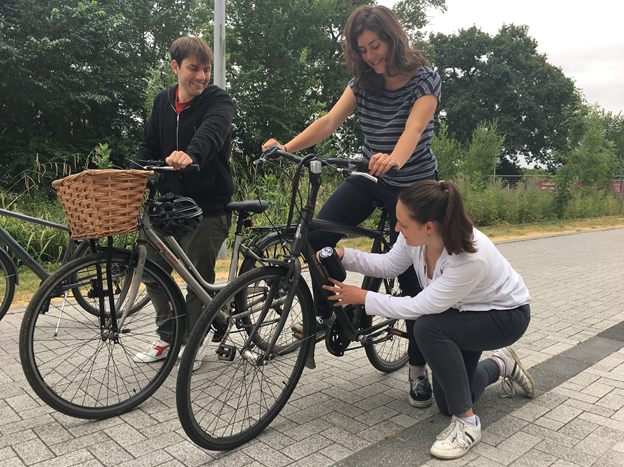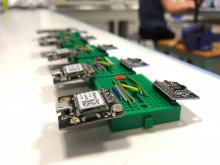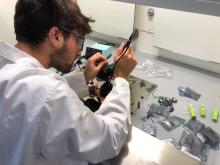
Note: An outcome of this project is the truly global open-seneca initiative - driven by six students of the original team. They work on this as a project of passion in parallel to their PhD studies. Find out more here.
A sensor network enabled by citizen science
The fourth cohort of Sensor CDT students developed a network of low-cost sensors in order to measure air pollution. Most air pollution monitors are stationary, but the students developed a portable low-power device which will allow individual citizens to measure air pollution. Sensor data collected by the participants will be made publicly available to provide a continuously updated map of air pollution levels.
Low-cost and accurate sensor technology
Air pollution, notably high particulate matter concentrations, poses a current health problem to citizens in many cities around the world. Reliable pollutant measurements are key to make informed decisions with regard to traffic management or providing advice to vulnerable people, such as the elderly, children, or people with respiratory conditions.
Many cities and regions have installed fixed air monitoring stations. While these provide accurate data at their location, it is difficult to extrapolate these measurements to other places, e.g. from one main road junction to another, or between two sides of a busy road which can be affected differently due to local air flow patterns.
The air pollution sensor under development by the team of ten students aims to detect particulate matter using off-the-shelf sensors costing less than £20. While these sensors are less accurate than their more expensive cousins, using a large number of connected sensors simultaneously allows the collection of more localised and frequent data. Advanced data analysis can be used to improve the overall sensor accuracy and provide more valuable data than fixed air pollution monitors.
Although initially developed to be mounted on bikes, future developments will allow the sensor to be carried by pedestrians or mounted to fleet vehicles.
Another challenge is data transmission. In order to reduce the power consumption of the device, the students are avoiding using mobile data and WiFi. Instead, they have investigated the use of low-power long range networks, such as LoraWAN and Sigfox.
Outreach and citizen engagement
The students will make their technology available to the general public so that citizens can monitor the air pollution on their way to work, the school run or during leisure activities. They are running workshops with secondary school children to engage them in the science and technology which makes these sensors possible.
The team
The team consist of ten students with backgrounds in physics, engineering, biotechnology and chemistry.
For more information see open-seneca | Air Quality Sensing | Pollution Mapping


